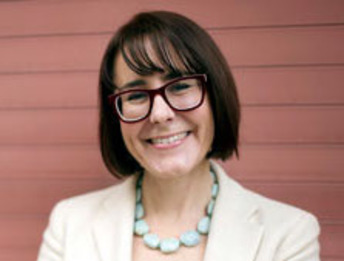Enhancing Life Through Experiential Learning: A Q&A with Dr. Elizabeth Bucar
October 11, 2016 • By Elizabeth Bucar
Every summer, Elizabeth Bucar, associate professor of religion at Northeastern University, travels with about twenty undergraduates to undertake the Camino to Santiago, a religious pilgrimage route in Spain. The goal of the class is to immerse the students in the tradition, theology, culture, and environment of pilgrimage by having them perform the actions of a pilgrim. As an experiential learning course, Bucar says, it offers a wide range of applications for Enhancing Life Studies.
What was your Enhancing Life Studies course about?
We have signature experiential learning courses at Northeastern called Dialogues of Civilizations. These are faculty-led month-long study abroad classes. The one I organize every summer is called Religion in Spain. This year, it focused both on rich history of religious diversity in Spain and the experience of walking the Camino to Santiago, which is a Christian pilgrimage route to the city of Santiago de Compostela in northwest Spain.
What did you have the students do?
We began with two weeks in the south of Spain: this time is a laboratory for exploring challenges of religious and ethnic plurality, especially within the unique Spanish narrative. There’s all this great material evidence of cohabitation—the Christian king who built his palace in Seville in Islamic style, the cathedral that’s literally inside the mosque. And then we study pilgrimage by being pilgrims for two weeks. We walk over 150 miles in total. Each day, we have to get to the place we’re sleeping that night, so sometimes the walk is very hard. And every day we read an article—whether theoretical, theological, or ethnographic—to situate our intellectual conversation. Students are also doing personal reflections on what the experience has been like for them during the day. And they do final projects as well that are the culmination of the experience.
What do you learn by teaching this class?
A lot of the things the students take away are the things I take away too. The first time I taught it, I realized that it was out of my control—not in a dangerous way, but I didn’t realize students were going to break down on the second day or be scared when they pull a muscle. Are teachers we often say we don’t want to be didactic and we want a classroom seminar to generate the ideas, but in this situation there truly is no way to be in control. And that resulted in the deepest learning experience for them and an incredibly surprising and fun teaching experience for me.
I’ve come to appreciate that in this class, I’m not just giving my students information or content or even critical thinking skills. It really becomes a place where all dimensions of what it might mean to enhance their lives—intellectually, personally, ethically, who do they want to be, what people do they surround themselves with, what life do they want to have—come into play. They ask me how I decided to do what I do, if am I happy. And it’s a safe space to have those conversations while also thinking abstractly about the subject matter.
What is the public relevance of this material?
The Camino is interesting because it was popular pilgrimage in the Middle Ages, but then through the Black Plague and the Protestant Reformation and the unrest of the sixteenth and seventeenth centuries, there’s a sharp decline of pilgrims and it’s almost lost, up until a very short time ago. In 1987, there were less than 3,000 pilgrims who completed the Camino. In 1992, the number was 10,000. And in 2010, it was a quarter of a million.
I wonder why there’s been such a sudden increase in popularity. Are people searching for an experience outside of their normal reality? I take away my students’ phones when they’re on the Camino—do we want to get unplugged? Do we want to do something hard? I think it may be that the Camino is something we think we can do—short-term, but intentional—that can enhance our life. And I do wonder, what’s the secret sauce? I have in mind a future research project on this: to try to figure out if there are things that work on the Camino but, when you don’t have a month for to go to Spain and do it, what can we do in our normal lives that might have the same effects?
Do you have any changes for the next time you teach it?
The southern Spain program is very interesting and the best way I know to teach comparative religion. But I want to expand on the intensity of the experience on the Camino. The plan for next year is for students to develop independent or group research projects about the Camino around these questions of enhancing life: What are the motivations of pilgrims, what are the mechanisms for transformation? And then they will develop a project, we’ll do our pilgrimage, and then we’ll spend the last portion of the program in Santiago gathering information to do these research projects.